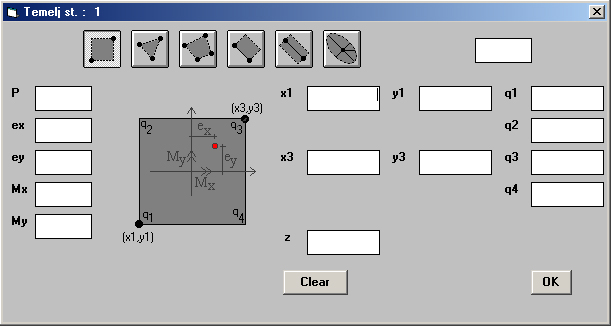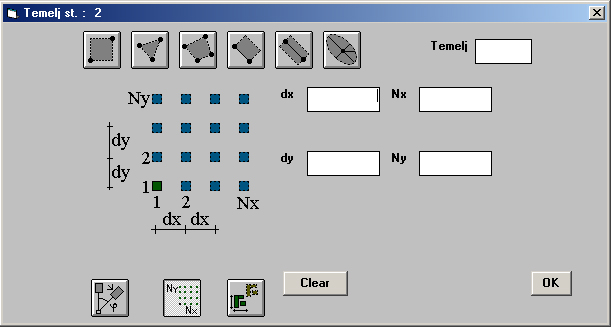![]()
USER FRIENDLY DATA INPUT - PREPROCESSOR
The program reads the input data about the soil half-space and the surface load from an input file that is a standard ASCII file with the extension dat. The data can be written into this file in two ways: by writing the pure code into a file or using either interactive pre-processor.
All the input data can also be written
in the input file directly using one of the standard editor programs as for
example Notepad. The contents of the input file can also be
supervised and as well modified during the implementation of the package with
the program Notepad that is a standard part of the Windows system.
This option is very convenient in the case when the obtained analysis results
show that the input data has been modelled incorrectly, and the input data can
thus be corrected immediately. The program automatically invokes the editor
Notepad although all other editors can be used if the text output file has the
extension dat.
However, this approach for the data input requires
detailed knowledge of the structure of the input file and therefore for the preparation of the input data the program
offers a graphically supported user-friendly pre-processor that allows the user
to model the problem. The pre-processor was designed in the approach that allows
the user to prepare the input data using several forms that in a sequence appear
on the screen. After defining the number of bases the user selects the appropriate
menu for the description of the base under consideration.
Consequently, a new form designed to description of the selected base appears and allows the user to describe the position of the base and its load by filling in the numerical values into prepared cells (Fig. 1).

Figure 1: Form for the decription of basic loads
Once the base is being defined it is
possible to use it for the description of new bases: a previously defined base
can be namely rotated around a given point, an option that is very adequate
for description of semi arches; and the base can be further multiplied to obtain
a row, a column or an array of bases with identical dimensions. It is further
possible to paste a pattern of previously defined bases to a new location. (Fig.
2).

Figure 2: Expanded form for the description of the loads
|